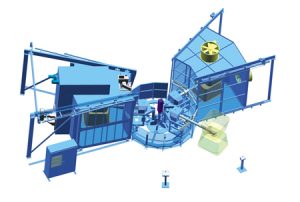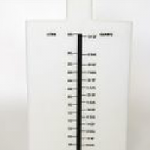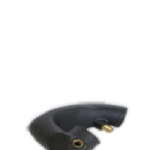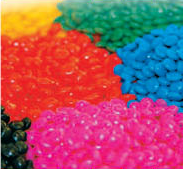How rotational moulding works
Rotational moulding is a high-temperature, low-pressure plastic-forming process that uses heat and biaxial rotation to produce hollow, one-piece parts. It’s a bit like using melted chocolate in a hollow mould to create a chocolate Easter egg.
First, we design a mould to the exact shape you require, then build the mould out of steel or aluminium. To make the product, we fit the mould onto a rotomoulding machine, and load plastic pellets in your chosen colour into the mould. The rotomoulding machine heats the mould, melting the plastic pellets. The machine continuously rotates the mould on two axes, to ensure that the melted plastic coats every inside surface evenly. A computer controls the temperature, rotation, cooking time, and cooling process.
Once the mould has been cooked and carefully cooled, we open the mould and remove the moulded plastic product from inside it. Finally, if required, we trim off excess plastic, or install additional fittings.
Advantages of rotational moulding
Rotational moulding is the easiest way to manufacture large, hollow parts such as oil tanks. Rotational moulds are significantly cheaper than other types of mould. The process wastes very little material, and excess material can often be re-used, making it a very economically and environmentally viable manufacturing process.
With proper design, parts assembled from several pieces can be moulded as one part, reducing fabrication costs. Parts produced using the rotational moulding process also have inherent strengths, such as consistent wall thickness and strong outside corners that are virtually stress-free. Where additional strength is required, we can design features such as reinforcing ribs into the part.
Pre-finished pieces such as metal threads, internal pipes and structures, and even different coloured plastics, can all be added to the mould before the plastic pellets are loaded. We carefully manage the shrinkage that occurs during cooling, to prevent damage to the pre-finished parts. This controlled shrinking allows for mild undercuts, and means we don’t need to use ejection mechanisms to remove products from the moulds.
Colours
Polyethylene comes in many colours to suit your custom moulded products. The choice of colours will depend on the mould design, and the type of product you want to make. We only use the highest grade plastic, which conforms to Australian standards.




